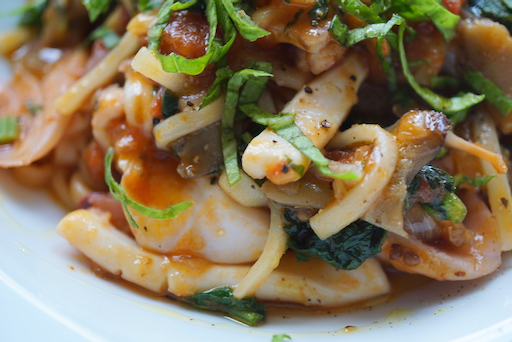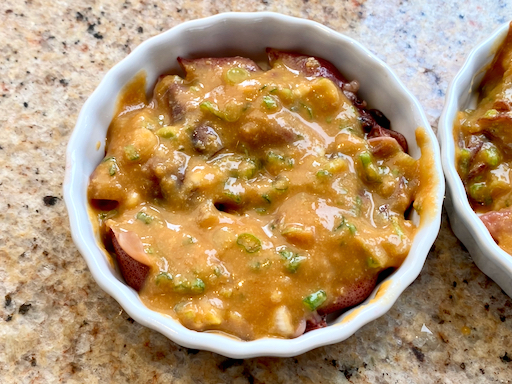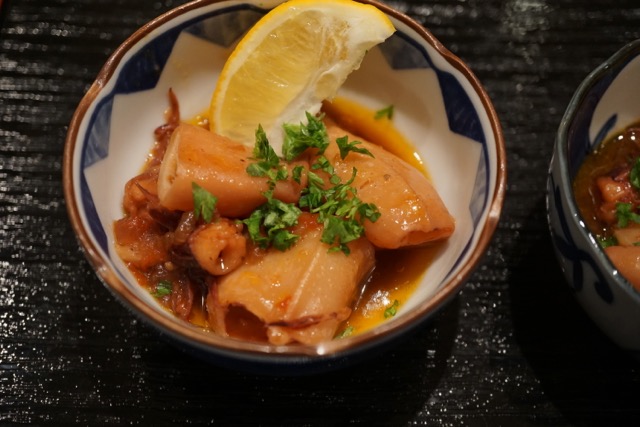In contrast, where we now live, most squid is of either the previously or "presently" frozen pre-cleaned variety. To my pleasant surprise, however, I found fresh squid (uncleaned) at one of our regular grocery stores. Naturally, I had to get some. Although the freshness was nothing close to those available in Japan (many are still alive), this is much better than frozen ones. Although the exact variety is unknown to me, it was larger than most frozen squid.
I pondered what to make from this squid but decided to make it in a classic Izakaya or street food way; grilled squid with ginger soy sauce. Otsumami yokocho おつまみ横町 page 74 has a similar recipe but this type of squid dish is rather classic. I remember this type of squid (served on a stick, see image on the left) was one of my favorite food stand foods during Japanese festival days* or "en-nichi" 縁日 when I was a kid. (Image from http://wallpaper.free-photograph.net/jp/photobase/yp5821.html).
I first marinated the prepared squid in a mixture of sake and soy sauce (1:1) and grated ginger root (1/2 tbs) for several hours in the refrigerator. Since I could not have a charcoal fire to grill the squid, I sauteed it instead. After I removed the squid from the marinade, I carefully dried them with paper towels despite this liquid came out from the squid while cooking and prevented it from nicely browning. This was unavoidable since I did not grill on a charcoal fire. After a few minutes turning once I added a small amount of the marinade and reduced the heat for 2-3 minutes and made a sauce to coat the surface of the squid (see below). If I was grilling I would have brushed on the marinade towards the end of the grilling.














































